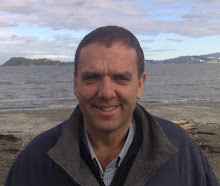
Elim Christian College today released details of the six students and a teacher who died in the tragedy in the Mangatepopo River yesterday. Full details of the seven, in the words of the school, are below:
Anthony Mulder
Anthony was a talented boy who recently represented our school at the Rotary RYPEN Leadership Camp. He loved the outdoors and loved his sports. He was a fun person with a great sense of humour and he loved to cook. He lived to serve the Lord especially through children's ministries.
Tom Hsu
Tom was always cheerful and had a great sense of humour. He loved God and gave his best in all he did. He was a peer support leader this year.
Portia McPhail
Portia was a gentle, kind, mature girl who loved playing and coaching netball. She was highly regarded by her peers. She was a well organised and motivated student.
Floyd Fernandes
Floyd was a highly talented musician who was very active in many areas of the school. A humble student who was a good all-rounder and who loved sports.
Natasha Bray
Natasha was a very talented all-round role model who loved God and people with a passion. She recently represented our school at the Rotary RYPEN Leadership Camp. She coached netball and was a Bronze Duke of Edinburgh recipient.
Tara Gregory
Tara was a friendly, mature and determined sports woman. She will be remembered as a brave, selfless and academic student.
Mr Tony McClean
Mr Tony McClean was an amazing teacher who loved God, life, students and sport. He had a passion for serving people and has made a huge contribution as our Sports Coordinator.
The loss to the school community is obviously huge and not made any easier by the full glare of the media spotlight. Tony, the teacher, had been involved in SU camps on and off for ten years. The principle and some of the bereaved parents have been amazing as they have spoken about the loss.
Andy Bray speaking about his daughter is particularly powerful.
http://www.nzherald.co.nz/section/1/story.cfm?c_id=1&objectid=10504366&ref=emailfriend
The St Marks year 9s just got back from the same centre and Wellington College also had kids there recently. I have been involved in so many programmes like this over the years that I can easily imagine the situation. Despite the testimonies of hope it is heartbreaking and awful. Our prayers are with them.





